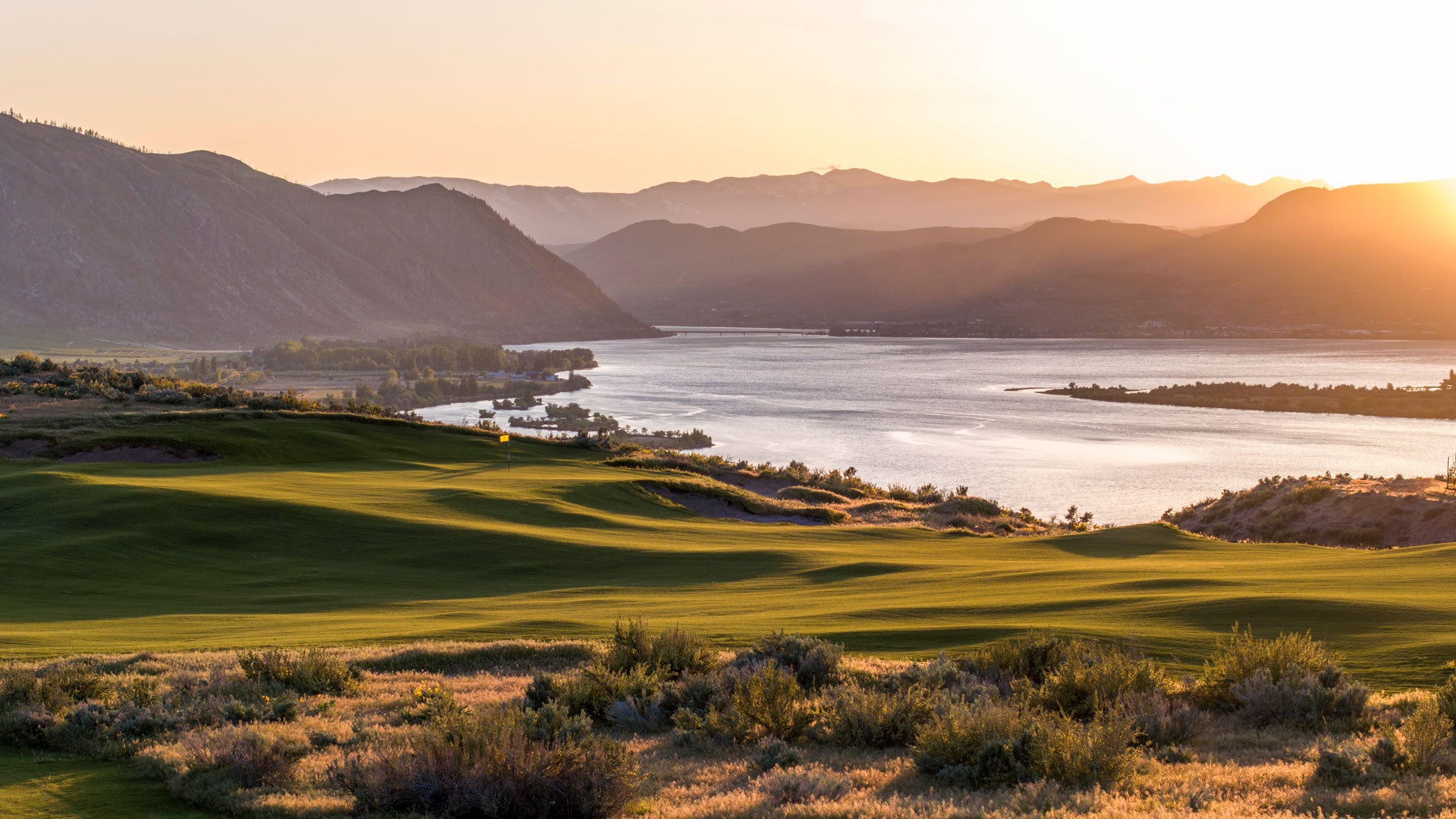The summer’s biggest news in destination golf comes from central Washington, where Gamble Sands is set to cut the ribbon on its second 18-hole course. It’s called Scarecrow, and it opens to the public this Friday. In advance of that unveiling, here are five things to know about the course.
1. It’s a David McLay Kidd design
Unlike Bandon Dunes, Streamsong and Sand Valley, which have tapped multiple architects for their projects, Gamble Sands has gone all in on McLay Kidd, who also designed the resort’s original namesake 18-hole course; its 14-hole par-3 course, Quicksands; and its putting course, Cascades.
2. It’s where McLay Kidd wanted to build the first 18
Though Scarecrow shares key traits with its older sibling — its fairways are broad-shouldered, its turf is bouncy — its terrain is more tousled and its greens are more richly contoured. It also offers more commanding views on a routing that runs along bluffs and ridges overlooking the Columbia River valley. It all adds up to a more demanding test, though it’s still hard to lose a ball.
The Scarecrow site is where McLay Kidd wanted to build the original course more than a decade ago. At the time, though, unsightly power lines, which have since been buried, stretched across the property, so McLay Kidd used other acreage for his first design. That course, Gamble Sands, ranks on GOLF Magazine’s list of Top 100 Courses in the United States.
3. The name nods to the region
Gamble Sands is owned by a longtime farming family, and Scarecrow is a cap-tip to those agricultural roots. In brainstorming sessions, the name won out over such candidates as Old Cob (a reference to corn-growing) and The Deer Farm (an allusion to a bygone local reindeer breeder). At one point, McLay Kidd (half-jokingly) proposed christening the course Twisted Sister — a wilder younger sibling. Another option was Horse Thief Trail for a trail that ran through the property. But for the family, Scarecrow checked all the boxes, including the fact that it was logo-friendly, good for merchandising.
4. The routing builds in drama
Like a lot of fine designs, Scarecrow opens with a friendly handshake — a short par-4 that plays over a brow to a speed-slot in the fairway bending gently left. From there the course begins a gradual climb before spilling down toward the river valley on holes that skirt and bump up against the bluffs. Much of this stretch provides a postcard panorama, none more striking than the view on the par-3 9th, which plays straight toward the valley, its green framed in the backdrop by the river valley. At the par-3 11th, the routing doubles back on itself, but understandably so, as McLay Kidd and his design partner, Nick Schaan, were intent on using an astounding natural green site perched on a point along the bluffs.
5. There’s room for more
The owners at Gamble Sands have plenty of land and room enough for additional golf. But it’s premature to talk about any future projects. Meantime, though, Scarecrow nudges the resort into new industry territory. An axiom of the golf-travel business, originally credited to Bandon Dunes founder Mike Keiser, is that one course qualifies as a curiosity, but two courses count as a destination. Gamble Sands, whose draw has been largely regional since it opened, now meets a higher-wattage metric with the potential for more powerful national pull.







